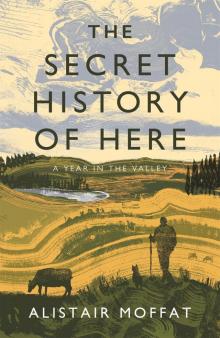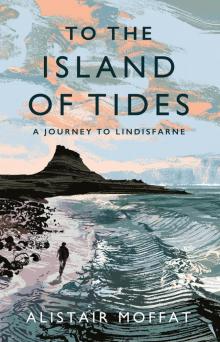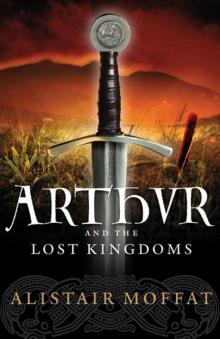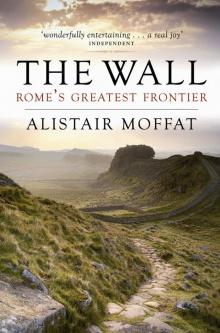- Home
- Alistair Moffat
Britain’s Last Frontier Page 25
Britain’s Last Frontier Read online
Page 25
Closer to home, the impact of The Lady of the Lake on perceptions of the Highlands was radical. Immediately after its publication, tourists turned up in large numbers to visit the Trossachs and Loch Katrine. Robert Cadell, the son-in-law of Scott’s publisher, recorded the reaction: ‘The whole country rang with the praises of the poet – crowds set off to view the scenery of Loch Katrine, till then comparatively unknown; and as the book came out just before the season for excursions, every house and inn in that neighbourhood was crammed with a constant succession of visitors. It is a well-ascertained fact, that from the date of the publication of The Lady of the Lake, the post-horse duty in Scotland rose in an extraordinary degree.’
A new hotel was built at Callander to accommodate the thousands who ventured, only a very few miles, across the Highland Line to look at the scenery, the slowly emptying backdrop for Scott’s imagination. All of this activity took place before the coming of the railways and at a time when travel overland was difficult, slow and sometimes dangerous. And it took place only sixty-five years after the last Jacobite Rebellion. The Highlands had been defeated, pillaged, neutered, romanticised and was in the first stages of being repackaged.
The next stages followed quickly. In 1814, Walter Scott’s first novel was published. Waverley, or ’Tis Sixty Years Since appeared anonymously but Jane Austen was not fooled and pretended not to be much impressed: ‘Walter Scott has no business to write novels, especially good ones. – It is not fair. He has Fame and Profit enough as a Poet, and should not be taking the bread out of the mouths of other people. I do not like him, and do not mean to like “Waverley” if I can help it, but I fear I must.’
Many others felt similarly compelled and, in only five months, 5,000 copies of Waverley were sold and the first best-selling novel was born. It romanticised not only the Highlands but also relatively recent and bloody events. The title counted that it was only sixty years since the last Jacobite Rebellion and, by blending historical fact with fiction, it created a new genre – the historical novel.
Scott’s anonymity was a flimsy conceit. When, in 1815, George, the Prince Regent, let it be known that he would like to meet ‘the author of Waverley’ and subsequently invited him to dine, Walter Scott turned up, unblushing and making no protest. It was a meeting of signal importance, an encounter that would accelerate a tectonic cultural shift in the relationship between Highland and Lowland.
Walter Scott deserved his immense success. He wrote with a prodigious energy and application, qualities that have ensured a lasting esteem amongst novelists and, indeed, writers of all sorts – his waning popularity notwithstanding. Rising early, maintaining a steady writing routine, concentrating on the task at hand, paying no heed to questions of inspiration or the lack of it, Scott may be seen as the first truly professional author.
After Waverley and the success of Guy Mannering and The Antiquary, novels set in Galloway and the Lowlands, The Great Unknown, as he was known, returned to a Highland theme and a setting close to his beloved Loch Katrine and the Trossachs – at least eventually.
Rob Roy may be the title of Scott’s fourth novel but he is in fact a minor character. Francis, or Frank, Osbaldistone is the hero of Rob Roy. Having quarrelled with his father, Frank is sent to stay with his uncle Sir Hildebrand Osbaldistone in Northumberland. With his customary penchant for baroque character names, Scott introduces tension between Hildebrand’s son, Rashleigh, and plain old Frank. In 1714, on the eve of the first major Jacobite Rebellion, the action moves further north, to Scotland and the Highland Line. Rashleigh has made off with documents important to the honour and solvency of Frank’s father and a pursuit begins.
This chase brings the hero in contact with Rob Roy MacGregor and both roam around the clan homelands between the head of Loch Lomond and Loch Katrine, the wild and western end of the Trossachs. Scott stretches his plot a little and makes a link between Sir Hildebrand and Rob Roy and the action ratchets up as the ’15 summons the clans to its banners. The dastardly Rashleigh meets a suitable and deserved end, Frank inherits Sir Hildebrand’s Northumbrian estates (all the other possible heirs having conveniently perished in the 1715 rebellion) and he marries Diana, a sufficiently distant cousin.
If Scott had followed his own recent form and used the name of his hero as a title for the new novel, Rob Roy might have been called Francis Osbaldistone. And it might not have impressed Scott’s publisher, Archibald Constable. Instead, sound marketing instincts prevailed, the much more commercial Rob Roy was proposed and its author noted that his publisher’s ‘sagacity and experience foresaw the germ of popularity’.
What persuaded Constable that his title would sell more books were notoriety and a growing fashion for Highland romance. Rob Roy was famous for being hunted, living like a kilted savage in the heather, armed to the teeth and surviving by his wits, defiant and elusive. This reputation was long-standing, perpetuated by the publication of The Highland Rogue, probably by Edmund Burt, in 1723. It purported to be a catalogue of incidents in Rob Roy’s life (not yet over as he was still very much alive when the presses rolled) and described him as a feral phenomenon, preternaturally strong, of ‘a gigantic size’, with a foot-long beard and a face and body completely covered in red hair. In Gaelic, Raibeart Ruadh translates as ‘Red Robert’ but perhaps not quite so red as painted. At about this time, the legend arose that Rob could pull up his stockings without bending his back.
The reality was, as usual, much more interesting and also emblematic for the story of the Highland Line and the cultures who coexisted either side of it. Rob Roy’s father was Donald Glas, a name that stood in a tradition of using colouring as a nickname. Grey Donald was a duine uasal (a Gaelic term meaning ‘a man of noble birth’), a scion of the gentry who led the various branches of Clan Gregor. There were three – the Lomond MacGregors, the Balquhidder MacGregors and the Rannoch MacGregors. The first was led by Donald Glas and was also known as Clann Dughail Cheir, the Clan or Children of Dark Dougal, yet another example of colouring and of a name-father sharpening identity. At the end of the 17th century, the paramount chief was a weak man, Gregor MacGregor of Stucnaroy, and Donald Glas was regarded as the de facto leader of the clan. Blood conferred status but prowess was needed to enhance it.
And Donald Glas appears to have been daring and active. At the head of a contingent of MacGregors, their grey-haired chief was at the siege of Dunkeld in 1689 with his youngest son. Born in 1671, Rob Roy was 18 and certainly old enough to fight alongside his father as they charged the cathedral enclosure. After the failure to dislodge the dogged Cameronians, Donald Glas led a cattle raid at Cardross in southern Perthshire. The lawful owners of the stolen beasts were evidently supporters of William of Orange and, while some Highlanders needed no second excuse to reive cattle, there seems to have been a political motive at work at Cardross.
In 1690, Donald Glas was arrested as ‘a great robber’ and brought captive to face justice at Edinburgh. Eventually freed on a promise of good behaviour from himself and on behalf of his sons, the old chief returned to Loch Lomondside unrepentant. Paying little heed to the law or the bond he had given, Donald Glas led a raid on Kippen where his men lifted cattle expressly as a show of Highland and Jacobite support for the Old Pretender, the exiled James II.
All of these criminal acts took place along the edges of the Highland Line and were highly visible to Lowland opinion. As a resort of lawlessness, even savagery, the mountains and glens were seen as sheltering a recurring threat to order and civilisation. But when stirred to act, government understood how to disable the MacGregors and they took a measure that had been effective in the past. In 1693, Clan Gregor was disnamed. It became a crime to bear the surname of MacGregor and those who persisted could not only be prosecuted, they could also expect no protection from the law. Their property and persons could be seized by force by anyone at any time.
It had happened before. In 1603, Clan Gregor had descended on the Colquhouns of Luss on the western shores of Loch Lom
ond and slaughtered them. King James VI and I was persuaded to act against the clan and their name was formally proscribed. After almost a century of pressure from their powerful neighbours, Clan Campbell, the MacGregors became reduced, forced to rent land and even reive cattle or blackmail cattle rearers in order to survive – and, worst of all, to take names such as Drummond or Gregory. When the second disnaming came into effect in 1693, Rob Roy took the name of Campbell.
But he was no savage. Unlike the vast majority of Scots, Rob could read, write and speak in Lowland Scots and Gaelic. His surviving letters show a developing fluency in both languages. Literacy mattered because Rob was in the cattle business; contracts were required to be made and clearly understood and English-speaking markets lay close at hand. From the lands of the Lomond MacGregors, Glasgow, Dumbarton and Stirling were less than a day’s ride away. And the parish of Buchanan that included Rob Roy’s house at Glengyle was divided into Lowland Scots-speaking farms in the south and Gaelic-speaking townships in the north. Geology marked this unequivocally for the Highland Boundary Fault, so visible on the islands and shores of Loch Lomond, runs through the parish.
The cultural contrasts were sometimes stark. In 1702, James Fraser noted that every Highlander seemed to carry arms and ‘their games were military exercises, and such as rendered them fittest for war, [such] as archery, running, jumping with and without racing, swimming and continual hunting and fowling’. In addition to the obvious linguistic divide, religion may still have separated the two communities. In the more remote glens, the saints’ days and celebrations of the Catholic Church probably hung on long after the Reformation of the 16th century. And clothes mattered too. Highlanders and Lowlanders looked very different.
Brave Clan Cameron
Nicknames can be eloquent. The clan who prospered most in the aftermath of the Jacobite risings of the 19th century was Clan Campbell and their Gaelic name translates as ‘Twisted Mouth’. More likely a reference to language than unfortunate facial features, it probably refers to a different-sounding, south-west dialect of Gaelic or the likelihood that, in the Dark Ages, these Gaelic speakers could also converse in Old Welsh. This was the language of Strathclyde, the old British kingdom based on Dumbarton Rock. Clan Cameron also derives from a nickname but in their case it may refer to a shared characteristic. In Gaelic, Cameron means ‘Bent or Broken Nose’, the unmistakable mark of a pugilist, a fighter. Deeply respected by James Wolfe at Culloden as ‘the bravest of the clans’, they also made the rising possible. When Prince Charles was being rowed up Loch Shiel to raise his standard at Glenfinnan, he and Colonel John O’Sullivan could see only 50 or so men waiting on the shore to meet them. When Allan MacDonald of Morar joined them with 150 clansmen, it was still no more than an escort and very far from an army. But, in the middle of fretful afternoon, everything changed. Led by their pipers, a thousand men of Clan Cameron came to Glenfinnan, raised the royal standard and began the long road to Culloden. So powerful was their influence that the Duke of Cumberland was not content to pacify the survivors of the clan – he wanted them all deported to the colonies.
Rob Roy was not only bilingual – he also owned two wardrobes. Here is a translation of a Gaelic epitaph:
You were the hawk of the people,
Rob Roy’s what they called you –
You look good wearing a plaid and a sword.
Well do a hat and cloak
With trimmings of gold
Suit your name, and it’s no boast to say it.
By the beginning of the 18th century, Rob had established himself as a reputable cattle dealer, his reiving days apparently behind him. He rented more farms and developed his business as southern markets for Highland beef expanded. On the eastern shores of Loch Lomond, at Rowardennan, he took on the lease of a parcel of land probably because it was the point at which Argyll drovers swam their cattle across from Inverbeg. But perhaps he grew his operations too quickly, making unsound deals, suffering some ill luck. And it seems that Rob Roy was robbed. Having been entrusted with cash to buy cows in the north, his chief herdsman absconded and was never seen again. By 1711, Rob Roy realised that he was facing bankruptcy.
To cover his mounting debts and keep cash flowing, Rob conceived a simple confidence trick. Trading on his previous sound reputation, he accepted money in advance to buy cattle for delivery in the spring of 1712 but he had no intention of fulfilling any contract. Instead, he quietly put his property into the hands of his extended family and planned to disappear deep into the interior of the Highlands, somewhere no one could catch up with him and the cash.
As it became clear to the buyers that no cattle would be driven down the trails in the spring and summer of 1712, suspicion festered and then flared. One of Rob’s customers was the immensely powerful James Graham, Duke of Montrose, and his Edinburgh lawyers had MacGregor formally declared outlaw. And then the hunt began.
After Montrose’s agents seized Rob’s property, a blood feud ensued. Living as a fugitive in the heather, he managed to wage a private war for more than thirteen years against a great landowner whose resources far outweighed anything an outlaw could muster. It was this unequal contest between a savage but resourceful – even noble – Highlander who knew the land and could live off it, like the Native American Indians, and a cultured, wealthy aristocratic Lowlander that caught the public imagination.
When the standard of the Old Pretender was raised in the Jacobite Rebellion of 1715, Rob and his men joined the forces led by the Earl of Mar. At the inconclusive battle at Sheriffmuir, near Perth, MacGregor would later claim not to have been involved, having arrived too late. Four years later at the Battle of Glen Shiel, the only action in another abortive rising, he was present and destroyed Jacobite munitions and supplies to prevent them falling into government hands.
In an attempt to pacify the Highlands and improve communications, George I sent Major General George Wade north in 1725. Those involved, however tangentially, in the 1715 rebellion were offered unconditional pardons and, on 8 October, Rob Roy and his men came to Finlarig, near Killin, at the head of Loch Tay. There, they surrendered their weapons (or at least those they had with them) and, on 19 October, Rob wrote a formal letter of submission, craving the king’s mercy for his treason at Sheriffmuir and Glen Shiel. In it, he helpfully pointed out that he had not actually joined in the fighting at Sheriffmuir. Here is the most entertaining part of Major General Wade’s report to George I:
I take the liberty to inform your Grace that of the arms that were brought to Breadalbane, the famous Rob Roy sent in a greater proportion and in a handsomer manner than his neighbours. I suppose this might be done with a view to pave the way for his submission to his majesty, which he came and made to me yesterday in this town. He assured me he never had the least thought of entering into the rebellion from any dislike he had to his majesty’s government, or from any attachment to the Pretender, but to avoid the persecution of his enemy, the Duke of Montrose, with whom he said he had since accommodated matters, and satisfied all his demands. This appears the more probable from the civility with which he treated the king’s soldiers, whenever he met with them straggling in the mountains, whom he never used to part without drinking the health of King George. He has just now sent me his letter of submission.
With a mixture of drams, ingratiating words and a sound instinct for the winning side, the famous Rob Roy finally made peace and appeared to escape justice. He also made it clear that he was willing to inform on other, less compliant Highlanders and his sons joined the independent companies, regiments raised for the crown. In a wonderfully apt satire written in 1726 and entitled ‘On Rob Roy’s Pardon and Preferment’, the Edinburgh poet, Alexander Pennecuik mused on the ironies of his hero’s behaviour:
Welcome brave captain to your own banditti,
Welcome as succour to a besieged city.
For service done at Sheriffmuir engagement,
Made captain of an independent regiment,
Most just for
it is known to every clan
Rob Roy was aye an independent man,
Depended not on God nor king before,
But only trusted to his own claymore.
Long live the king in plenty, peace and joy,
Who makes a loyal lad of Robin Roy.
There is a near relation ’twixt the two,
One steals a crown, the other steals a cow.
After 13 years of being hunted in the mountains and glens for being a conman and a rebel, Rob Roy was 53 years old in 1725 and no doubt anxious for a quieter life. At Balquhidder, he lived for a further nine years before dying peacefully in his bed.
Rob’s posthumous reputation grew steadily. In 1743, only two years before the outbreak of the last Jacobite rebellion, a second edition of The Highland Rogue was published. When Dorothy and William Wordsworth toured Scotland, they visited what they mistakenly believed was the grave of famous Rob Roy and the great poet was moved:
A famous man is Robin Hood,
The English ballad singer’s joy.
And Scotland boasts of one as good,
She has her own Rob Roy!
Drama followed and, in 1803, the play Red Roy opened in London. Set a century before he was born, it recounted the early exploits of ‘The Red Robber’ and told of his passionate love for the fair Helen (not his wife). Drawn without any redeeming features, Rob’s character met his demise in a raging Highland torrent and the curtain closed. The play was very popular.

 The Secret History of Here
The Secret History of Here The Night Before Morning
The Night Before Morning To the Island of Tides
To the Island of Tides Arthur and the Lost Kingdoms
Arthur and the Lost Kingdoms Britain’s Last Frontier
Britain’s Last Frontier The Faded Map: The Lost Kingdoms of Scotland
The Faded Map: The Lost Kingdoms of Scotland The Wall
The Wall